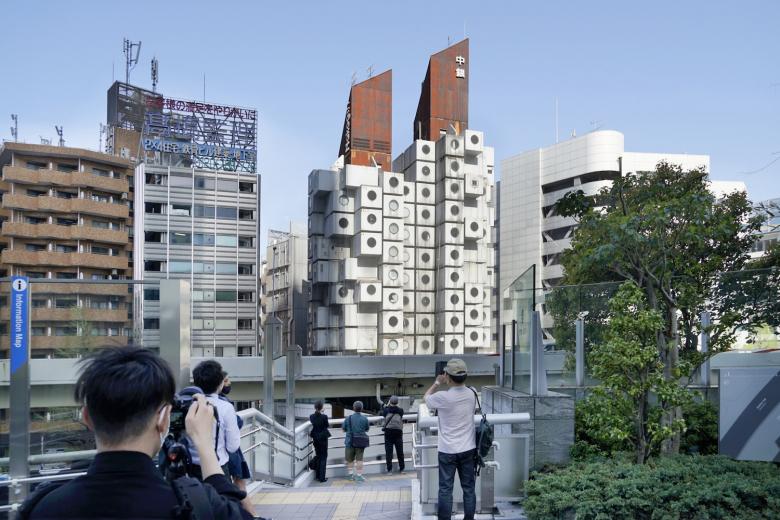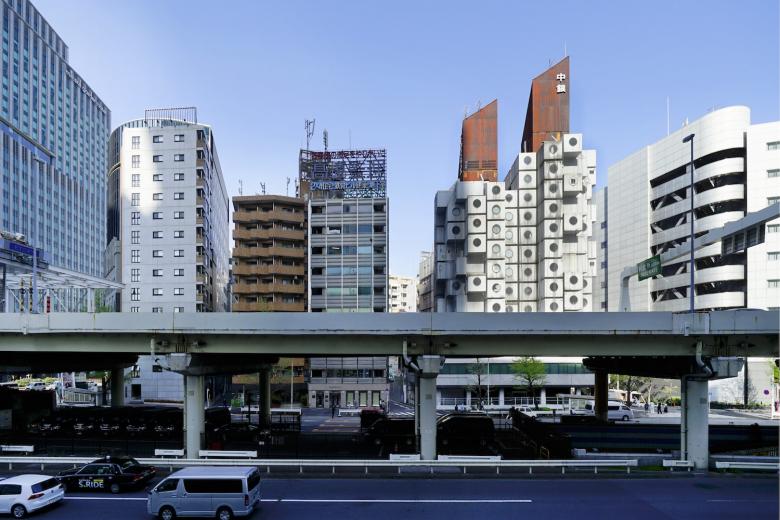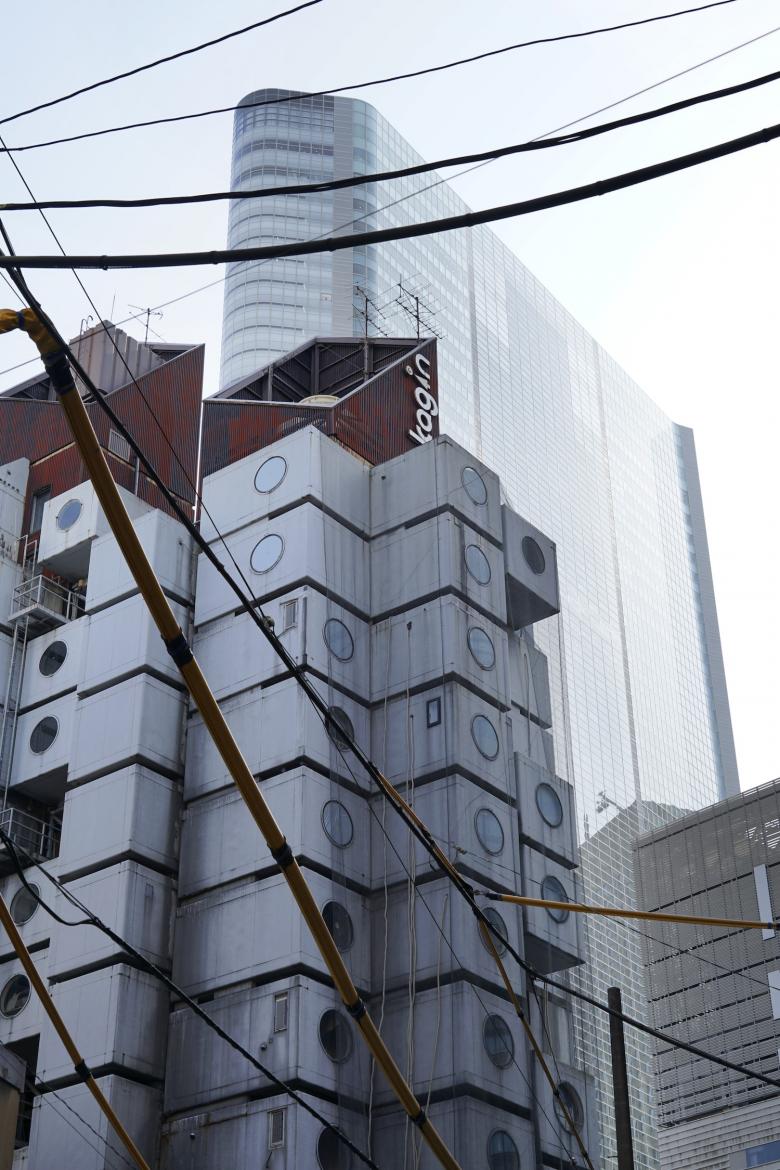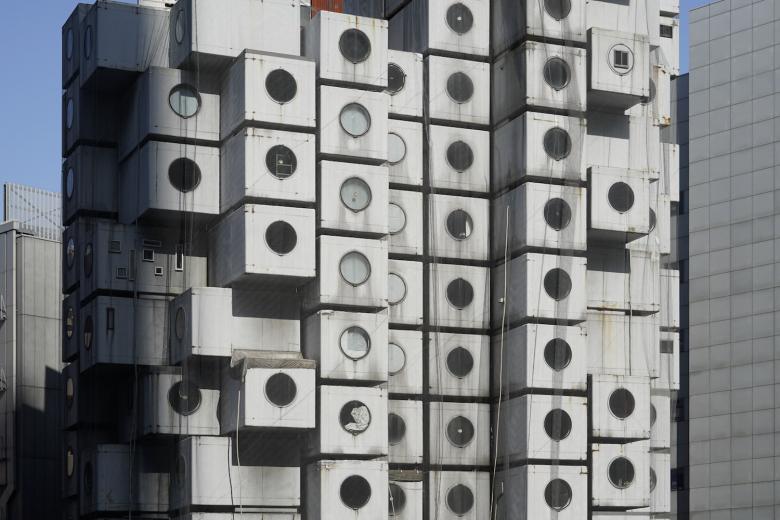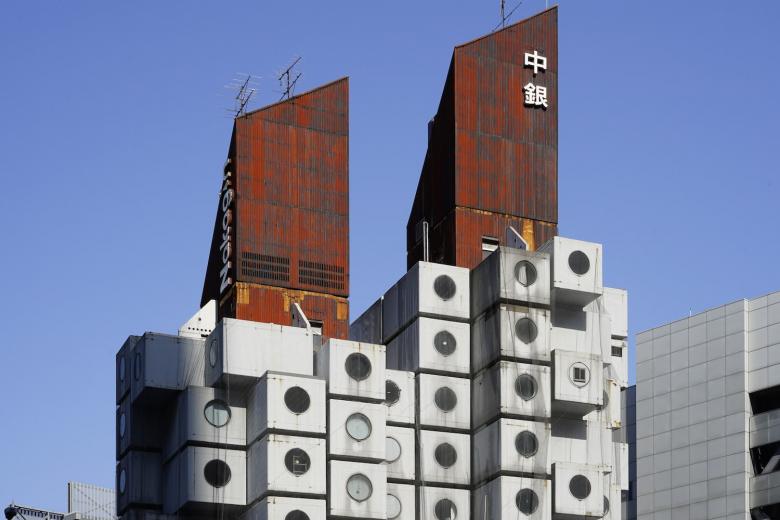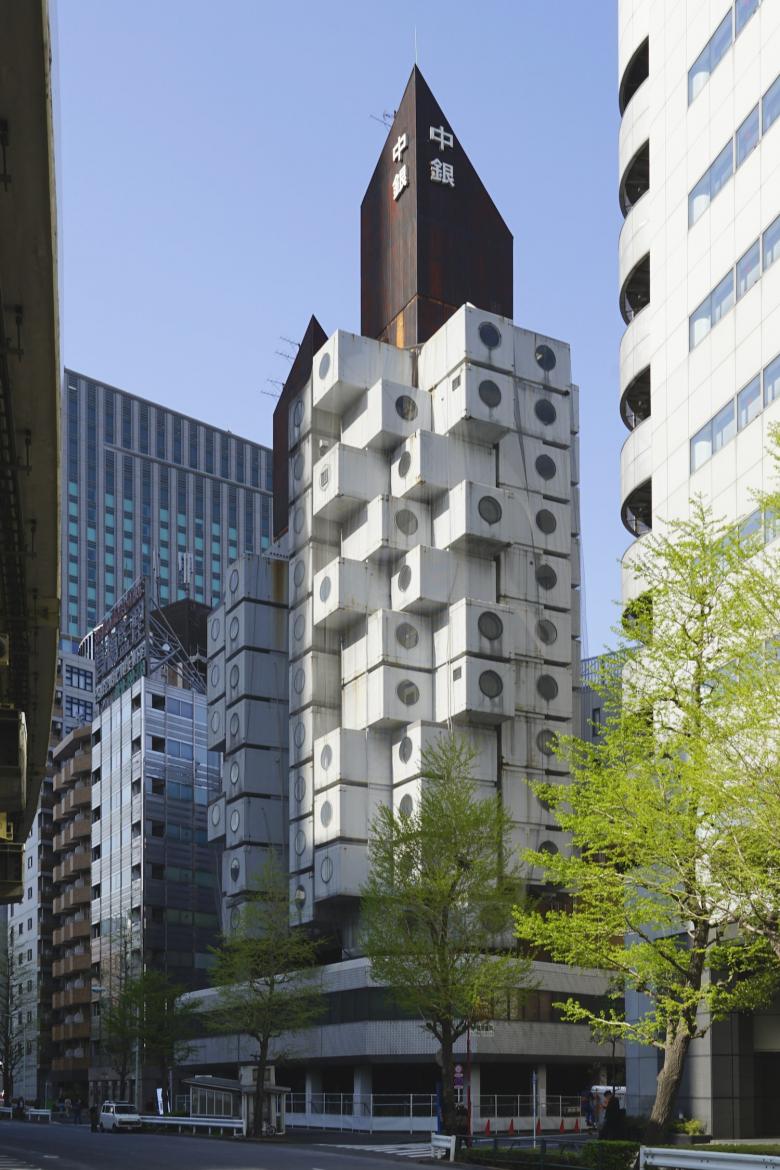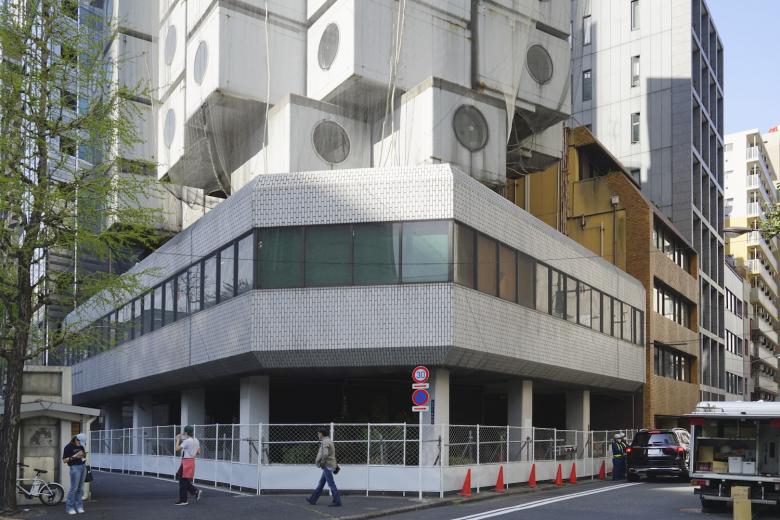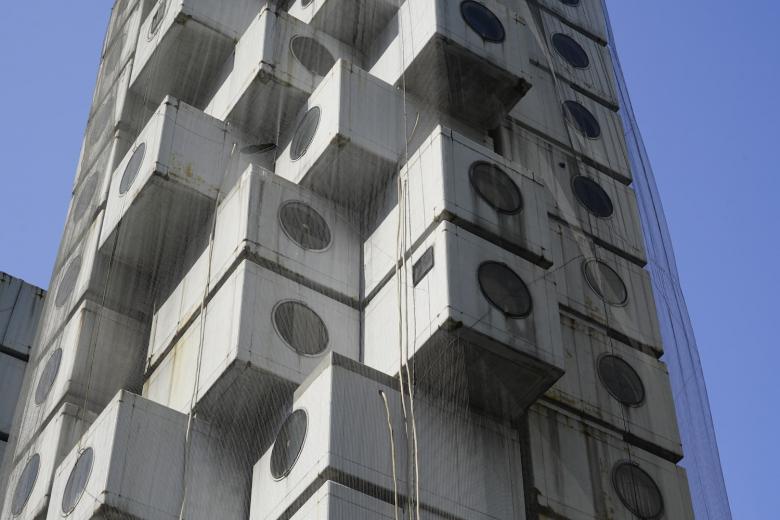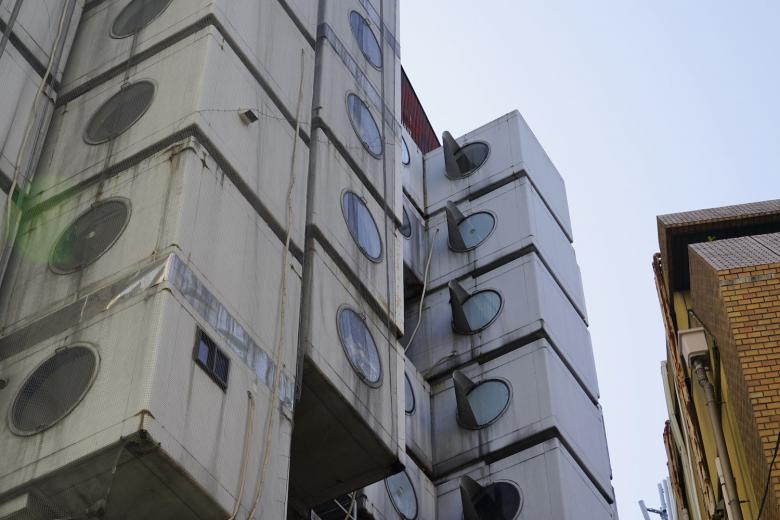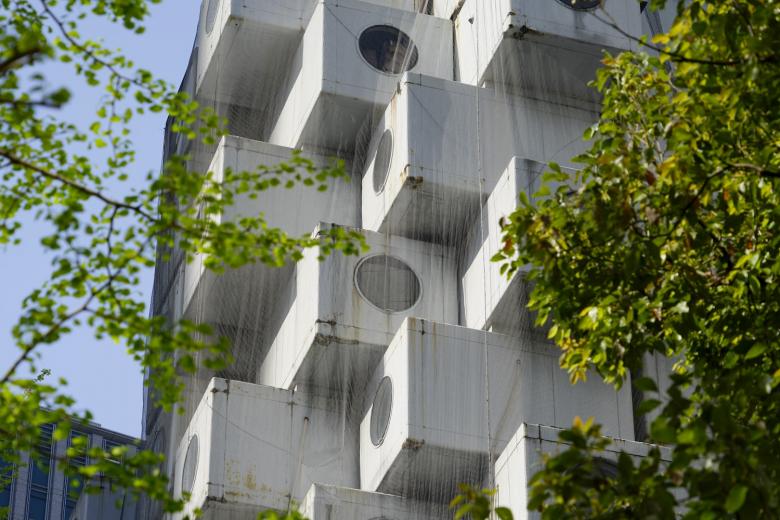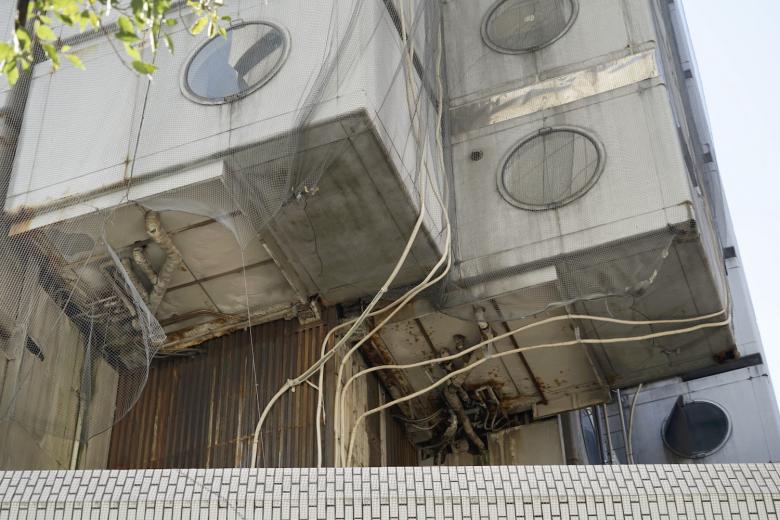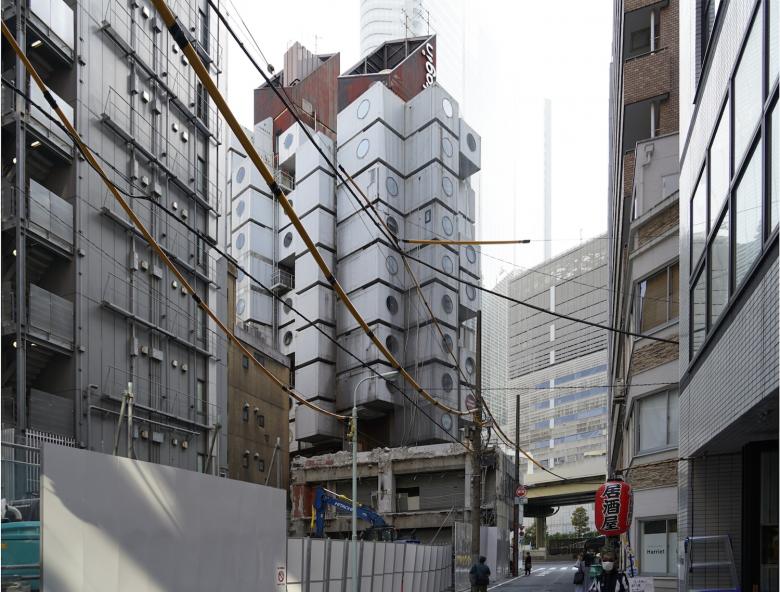The End of an Icon
John Hill
12. abril 2022
Photo: Ryogo Utatsu/Neoplus Sixten Inc.
Today, April 12, marks the start of the demolition of one of the most important works of postwar architecture in Japan: Nakagin Capsule Tower, designed by Kisho Kurokawa and completed exactly fifty years ago. Japan-Architects curator Ryogo Utatsu sent us some photos he took today, before scaffolding shrouds the building's capsules.
Located in Tokyo's Shimbashi District, Nakagin Capsule Tower is famous worldwide as one of the few built examples of Metabolism, the avant-garde movement started by a group of Japanese architects at the World Design Conference in 1960. Speculating on how architecture can change and evolve almost organically as a means of rebuilding society after World War II, the Metabolists made numerous proposals for buildings made with capsules that could be plugged in, removed, moved, and plugged in again as needed. Kurokawa, one of the movement's founders, managed to achieve just that with Nakagin Capsule Tower, where 140 prefabricated, fully fitted residential capsules were bolted to two concrete cores. Intended to be moved as needed — even to other capsule towers in other places — the shipping container-size capsules never strayed from their original positions, though, and no other capsule towers were ever built to receive them. Deferred maintenance and increasing costs of repairing the capsules, which would require asbestos abatement, led to calls for demolition of the tower this century — and eventually to today's unfortunately timed milestone.
The building is located at 16–10, Ginza 8–chome on valuable real estate that is now surrounded by increasingly taller towers built this century. (Photo: Ryogo Utatsu/Neoplus Sixten Inc.)
One such building is the 48-story Dentsu Tower designed by Ateliers Jean Nouvel and completed in 2002, seen here beyond Nakagin. (Photo: Ryogo Utatsu/Neoplus Sixten Inc.)
Each capsule came with a bathroom, kitchenette, desk, bed, and a single round window that could be pivoted open for ventilation. (Photo: Ryogo Utatsu/Neoplus Sixten Inc.)
The cores of Tower A and Tower B are eleven and thirteen stories tall, which combine with the angled tops to give the building an asymmetrical silhouette sympathetic with the project's original idea of movement over stasis. (Photo: Ryogo Utatsu/Neoplus Sixten Inc.)
Writing in his "Capsule Declaration" in 1969, Kurosawa boasted that the capsule "means emancipation of a building from land and signals the advent of an age of moving architecture." (Photo: Ryogo Utatsu/Neoplus Sixten Inc.)
But the building is very much rooted to the ground, atop two-story base that is not usually seen in photographs of the project. (Photo: Ryogo Utatsu/Neoplus Sixten Inc.)
Photos have tended to focus, appropriately, on the capsules, which are in their same locations as in 1972 but have been covered in netting for many years to catch any falling debris from the deteriorating capsules. (Photo: Ryogo Utatsu/Neoplus Sixten Inc.)
As designed, the capsules were meant to last 25 years, meaning they should have been repaired around 1997. This photo shows how windows at inside corners were outfitted with scoops for privacy. (Photo: Ryogo Utatsu/Neoplus Sixten Inc.)
Plans for demolition have been in the works since around 2007 (stayed by preservation efforts, the financial crisis, and other factors), and in that time the costs for repairing each capsule rose to approximately 8.8 million JPY (800,000 USD), prohibitively expensive for the capsule owners. (Photo: Ryogo Utatsu/Neoplus Sixten Inc.)
According to an article at the Japan Times, demolition work is scheduled to last until December 29. (Photo: Ryogo Utatsu/Neoplus Sixten Inc.)
Even though today marks a sad end for an important building, plans are afoot to save some of the capsules and send them to cultural institutions around the world, ultimately fulfilling part of Kurokawa's ambitions. (Photo: Ryogo Utatsu/Neoplus Sixten Inc.)
Artículos relacionados
-
Remembering the Tower of Capsules
17/11/22
-
The End of an Icon
12/4/22
-
The End Is Near
4/4/22
-
Dispersing the Capsules
9/7/21
-
Goodbye to the Future
10/5/21
